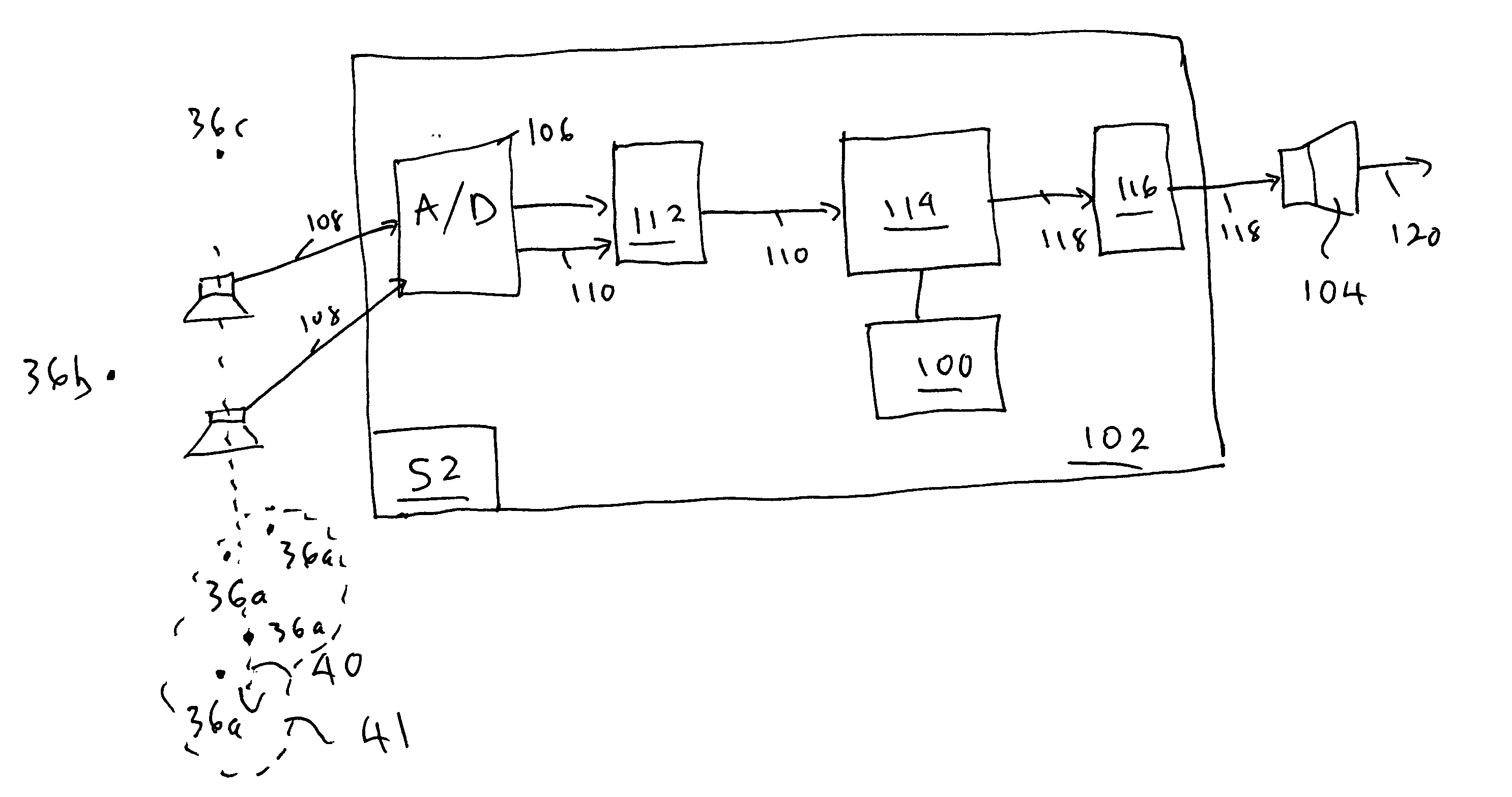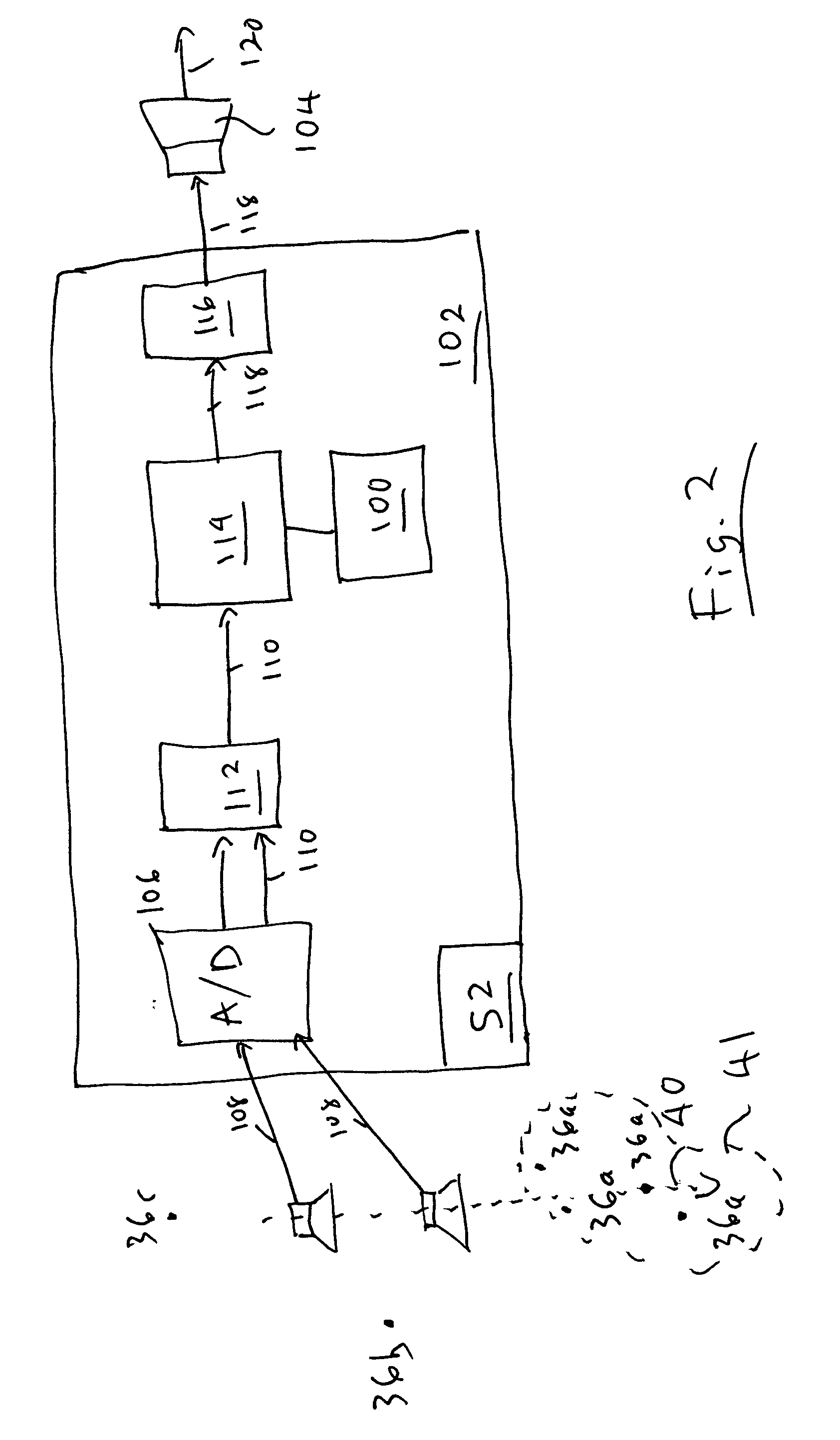Method and apparatus for directional enhancement of speech elements in noisy environments
a technology of directional enhancement and speech elements, which is applied in the direction of transducer details, instruments, sound producing devices, etc., can solve the problems of current hearing aids and hearing aids that are not suitable for enhancing conversational speech, and achieve the effect of enhancing the signal strength of the selected speech related elements
- Summary
- Abstract
- Description
- Claims
- Application Information
AI Technical Summary
Benefits of technology
Problems solved by technology
Method used
Image
Examples
Embodiment Construction
Listening Device 10 Components
[0015] Referring to FIGS. 1a, 1b, 1c, a personal listening device 10 has a housing 12 consisting of a top shell 14 and a bottom shell 16, made from such as but not limited to ABS plastic. The housing 12 has a main portion 31, for accommodating a battery compartment 50 and an ear port 18, coupled to an extended portion 33, for accommodating the location of one or more spaced apart microphones 34. The device 10 uses two or more spaced apart microphones 34, for example both located in the extended portion 33, for capturing of sound waves emanating from multiple sources 36a,b,c in the user's local environment 38. The device 10 uses directional, noise reduction, and feedback compensation signal processing (directed by an algorithm 100—see FIG. 2), of sound waves captured by the spaced apart microphones 34, to improve the clarity and quality of desired speech audio signals mixed with undesired background noise (e.g. desired speech sound waves captured from ...
PUM
 Login to View More
Login to View More Abstract
Description
Claims
Application Information
 Login to View More
Login to View More - R&D
- Intellectual Property
- Life Sciences
- Materials
- Tech Scout
- Unparalleled Data Quality
- Higher Quality Content
- 60% Fewer Hallucinations
Browse by: Latest US Patents, China's latest patents, Technical Efficacy Thesaurus, Application Domain, Technology Topic, Popular Technical Reports.
© 2025 PatSnap. All rights reserved.Legal|Privacy policy|Modern Slavery Act Transparency Statement|Sitemap|About US| Contact US: help@patsnap.com



